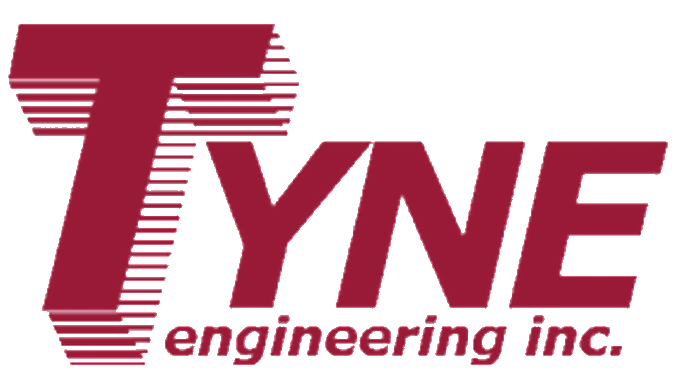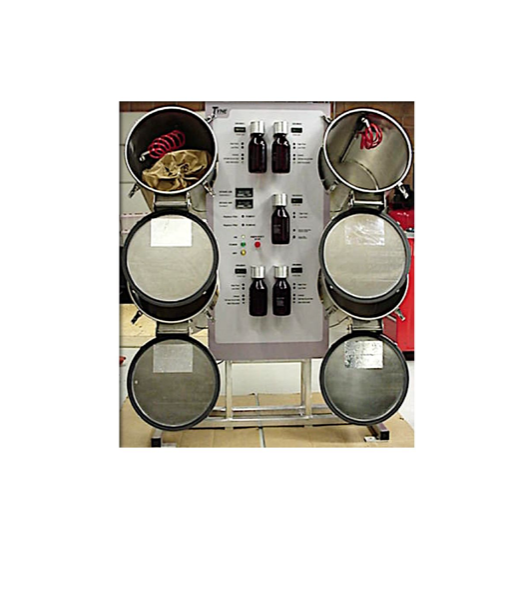
Tritium Measurement In Soft Waste
Model 7019-SWTM-001
Tritium laboratories accumulate large quantities of Low Level Waste from items such as paper, Kim-wipes, plastics, cloths and gloves which are used in daily activities of operators and maintenance personnel. The personnel will have worked in potentially active areas and so it is assumed that their waste is contaminated with tritium, even though it may not be. During the course of a year considerable waste in this category will accumulate. Some of the waste could be of a low enough level that it could be discharged into regular landfill. However, as its activity level is not certain, it must be stored indefinitely in a low-level waste facility with the costs and potential public objection that entails. Tyne has designed equipment to assess the activity of bagged and potentially tritiated waste.
The equipment is based on measuring the tritium outgassing rate by capturing the tritium in a bubbler which is subsequently monitored in a scintillation counter. In the case of waste activity being lower than approved levels for disposal, the bag can be sent to regular landfill. This may represent significant saving. The equipment can also be used to characterize tritium-contaminated waste, helping personnel to become aware of which kind of wastes are potentially more active and should be bagged together. This will result in increased inactive waste accumulation, and reduced amounts being sent into long term storage.
- Cuts expenses by reducing long term waste volumes.
- Can monitor many bags of tritium-contaminated waste.
- Automatically timed operation with minimal operator involvement.
The system comprises several closed and sealed stainless steel drums, into which laboratory soft waste bags have been placed. Bags may be plastic or paper. A sharpened wand comprising an inner and outer tube to deliver and return air to and from the bags is inserted into the bags before the drum door is closed.
Circulating air, delivered by a coiled tubing assembly connected to the wand and located inside the drum, sucks outgassed tritium from the waste and transports it to a bubbler. There is one bubbler per bag, and one spare for measuring the monitoring room background. The bubbler removes all tritium (which is in oxide form) in the gas stream. Gas flow and duration are controlled and measured. This allows quantity of tritium in individual bags to be calculated. Bags of acceptably low activity level can be segregated and discarded into unprotected landfill.
Multi Drum Arrangement
The basis for the design of the tritium in soft waste equipment is a formula arrived at experimentally by Ontario Hydro Technologies. The formula equates the tritium content of bagged waste to the measured rate of out-gassing. It is known that in most laboratories where tritium is handled, much of the soft waste is clean and could be discarded if the activity level was known for certain. This equipment provides that confirmation.
The Soft Waste Tritium Monitor Assembly comprises a number of parallel systems controlled by a timer and operating simultaneously but independently. Operation is initiated automatically when the presence of a waste bag is detected inside a drum by an optical sensor, activated by the closing of the drum lid.
The equipment records the cycle times of each drum operation, thereby determining the amount of air used to purge the bags. Since the air flow is according to a predetermined rate established by a mass flow controller, the total quantity of air transported through each bag and consequently each bubbler is known.
A fifth bubbler is provided which takes room air alone, monitors it for tritium without going through the bags and provides a background base line measurement. This is a twice daily measurement, and does not need to be carried out more frequently than once every 12 hours. It provides a number to which bag measurements are compared in case tritium is present in the waste bag monitoring atmosphere.
When the monitoring operation is completed, the drum will be put into purging mode to make sure that no tritium from a previous bag remains. The phase of operation of the system is displayed by colored lights on the control panel.
Flow through the drums is provided by a wobble pump chosen for its quiet performance while delivering continuous, reliable air flow.
The glass bubblers are easily removed from their sealed aluminum mounting brackets for conveyance to the scintillation counter. The results of the scintillation counter analysis can be printed on the waste bag labels for easy subsequent recognition.









